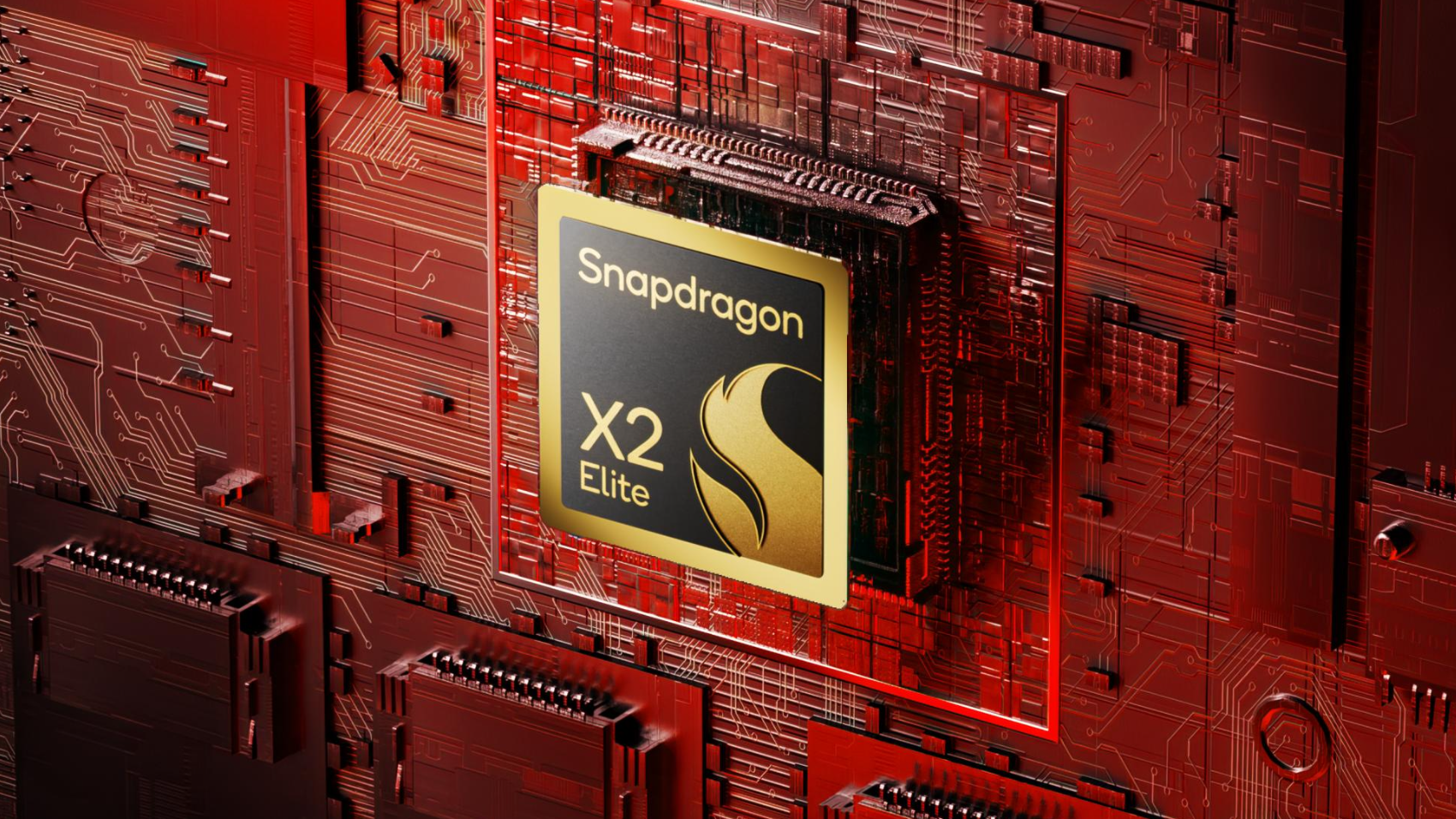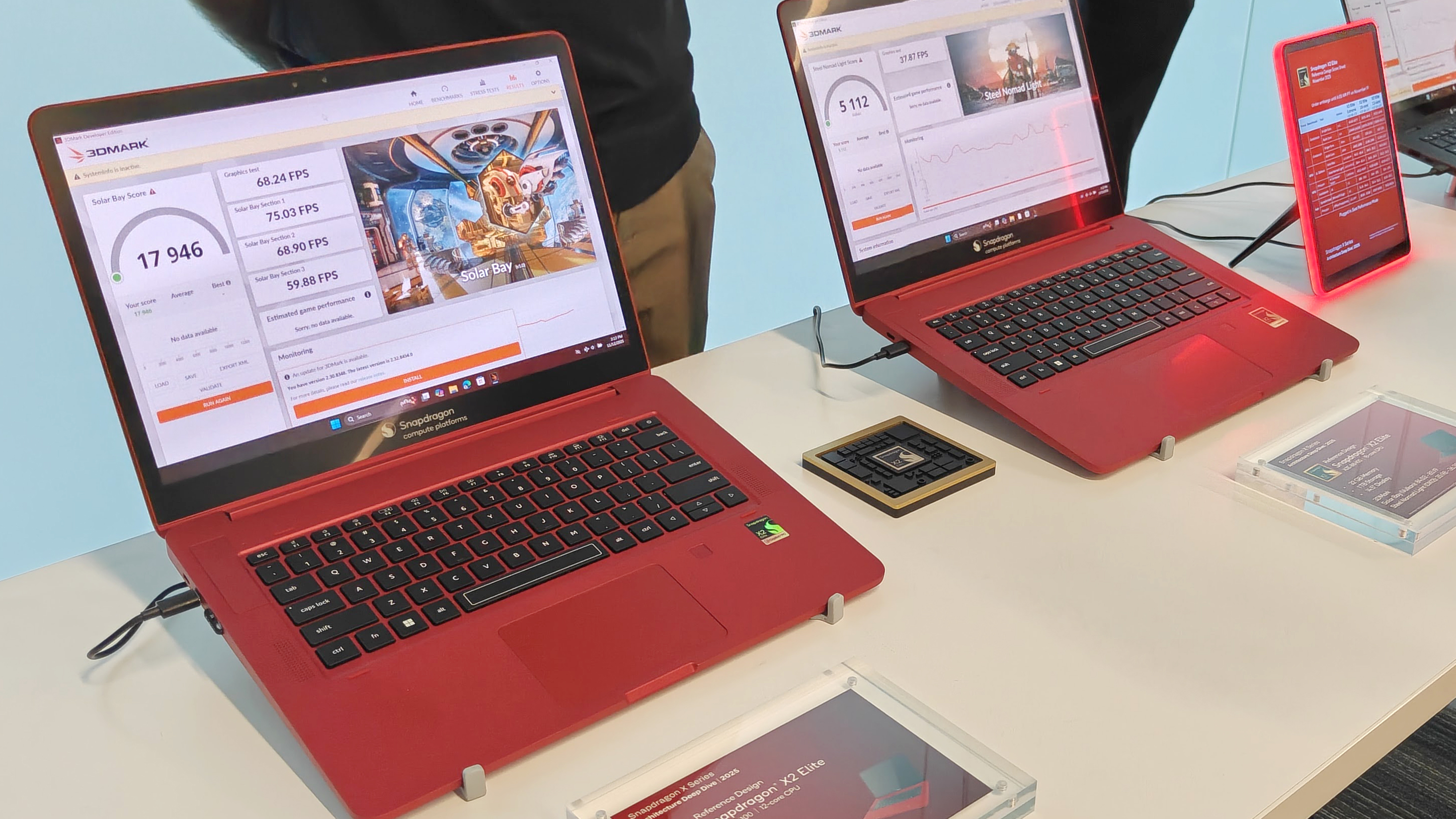I tested Qualcomm’s new X2 Elite – here's why Windows laptops are about to change forever
A visit to Qualcomm HQ to benchmark Snapdragon X2 Elite teases what's in store for 2026

Earlier this month, I visited Qualcomm's headquarters behind closed doors to get a look at its latest laptop chipset: the Snapdragon X2 Elite (first revealed at Snapdragon Summit back in September).
While it's clearly an update to the company's first Oryon CPU-based solution for laptops, the Snapdragon X Elite – which I looked at against its key competitors, here – the latest iteration looks to change Windows laptops forever.
How so? Sure, there's more power for compute, graphics and artificial intelligence – but to a degree that challenges even Apple's latest M5 solution. And Intel. And AMD. And given all the options you have as a consumer, that's a big stir of the pot.
Qualcomm has also – as I discovered in various briefings and during test experiences – enhanced battery life potential and, just as importantly, been working to close various minor compatibility gaps that the first-gen X Elite experienced.
It's not too long before actual laptops featuring Snapdragon X2 Elite go on the shelves – with the "first half 2026" earmarked – and here's why you should now absolutely consider the solution as among the most viable options for your next Windows laptop.
Apple M5-rivalling benchmark scores

| Row 0 - Cell 0 | Snapdragon X2 Elite | Apple M5 | AMD Ryzen AI 300 (AI 9 HX 370) | Intel Core Ultra 9 (285H) |
Geekbench (multi-thread) | 20,301 | 17,795 | 14,390 | 14,846 |
Geekbench (single-thread) | 3838 | 4288 | 2973 | 2613 |
I did a bunch of benchmarking during one session at HQ, from Geekbench to Cinebench, to 3DMark, to Procyon. The results were all strong. But I don't want to get obsessively bogged down in numbers – and I know there'll be heaps of discussion yet to be had when real-world devices begin to appear.
However, the key takeaway from the top-line Geekbench multi-thread result is that Qualcomm's solution comes out on top. Can it best Apple's M5 in a single-thread test? Absolutely not – but nothing can at the time of writing.
Get all the latest news, reviews, deals and buying guides on gorgeous tech, home and active products from the T3 experts
If you're in the market for a Windows device, not a Mac, then you're not going to realistically compare the two. What the top-line figures show, however, is that the step up that Qualcomm has managed to achieve in accelerating beyond AMD and Intel's offerings with its latest X2 Elite is pretty staggering.
X2 Elite vs X2 Elite Extreme

| Row 0 - Cell 0 | CPU | RAM | GPU | NPU |
Snapdragon X Elite (original) | 12 cores (3.8GHz max multi-core) | device specific | 1.5Ghz max | 45 TOPS |
Snapdragon X2 Elite | 12 cores or 18 cores (4.0GHz max multi-core) | device specific | 1.70GHz max (X2-90 / X2-85) | 80 TOPS |
Snapdragon X2 Elite Extreme | 18 cores (4.4GHz max multi-core) | 48GB (on chip) | 1.85GHz max (X2-90) | 80 TOPS |
And that's before I've even mentioned the top-tier Snapdragon X2 Elite Extreme version. It's another 18-core chip, but with a higher clock rate – and comes with 48GB memory by default on the chip itself (plus a wider bus, meaning it can decode graphics data even more quickly).
The result? Well, it's inevitably even more impressive. But, unavoidably, it'll be even more expensive and, bar a few more specialist setups, I wouldn't call this the mass-market product that you and I will buy. It's one of those more show-off solutions.
However, and this is an interesting point to note, Qualcomm's take with the NPU – that's neural processing unit, used for on-device AI tasks – is that this should be device agnostic. That's why all X2 Elite chips, including Extreme, are one and the same. But, with 80 tokens per second (TOPS) this is no low-key AI-able product.
Working to enhance compatibility
Prior to the X Elite solution, Qualcomm's older Snapdragon 7c just couldn't deliver a full, core Windows PC experience. That era is best forgotten.
The latest Snapdragon X2 Elite, however, is precisely designed to leverage the era of 'the AI PC' – or Copilot+ PCs, as Microsoft likes to call it.
Despite Snapdragon X2 Elite running on an ARM architecture – once mostly reserved for phones – it's also able to run software emulation, which it does in the background without you ultimately noticing.

That means it can run apps that would otherwise want x86 architecture, the likes of which Intel still uses in its latest solutions.
Apple had precisely the same challenge when moving away from Intel's chips and onto its own M-series silicon for its MacBook products. And it, too, had some initial teething problems with compatibility – which in the four generations since have been all but eradicated.
Qualcomm is on a similar path. It's working more closely with manufacturers for future product releases, but also with software developers, to ensure a better experience across the board.
That's especially true of gaming, where the latest Adreno X2 graphics is far more capable of sustaining higher frame-rates. That bridges the gap that I've previously pointed out with Intel's Core Ultra Series 2 chips, which gave better gaming performance. But now Qualcomm's latest has the upper hand.
A word on battery life

Chips need to be powered. And increased power demands will eat up battery life. So how is Snapdragon X2 Elite designed to last?
Well, this will in part depend on device form-factor, as and when that becomes a reality. The mock-up test machines I saw, however, were 22W units, fitting neatly into the "thin and light" range as you'd expect from a lightweight laptop.
However, with a claimed 10% chipset power reduction – when engaged in tasks like browsing, streaming, or using office apps, anyway – the outlook is strong.
So if you want a lightweight laptop that can run tasks on battery power, is AI adept, and has enough graphical nous to excel – even when mobile – then Snapdragon X2 Elite has got the goods.
What laptops feature Snapdragon X2 Elite?

The million dollar question! Right now the answer is 'none' – at least not in the wild. Qualcomm has its own test models in various form-factors to progress some of its own testing, but these are just for early demonstrations.
However, brands are expected to begin ranging models from the first quarter to the first half of 2026. I therefore wouldn't be surprised if some form-factors are shown off at CES as early as January.
Given that the original Snapdragon X Elite was in products ranging from Microsoft to Dell, Lenovo to HP, Samsung to Asus and Acer, I would expect to see a similarly keen range of the latest chip.

Mike is T3's Tech Editor. He's been writing about consumer technology for 15 years and his beat covers phones – of which he's seen hundreds of handsets over the years – laptops, gaming, TV & audio, and more. There's little consumer tech he's not had a hand at trying, and with extensive commissioning and editing experience, he knows the industry inside out. As the former Reviews Editor at Pocket-lint for 10 years where he furthered his knowledge and expertise, whilst writing about literally thousands of products, he's also provided work for publications such as Wired, The Guardian, Metro, and more.
You must confirm your public display name before commenting
Please logout and then login again, you will then be prompted to enter your display name.
